Goal
In-App Pro Shop aims to help Ethereum developers easily support in-app purchases, freeing them to focus their energies on creating a better product for their users.
Using smart contracts that live on the blockchain and a web-based maintenance application, IAPS implements a franchise system, whereby anyone can create a Shop, define and categorize the items they will sell, and quickly integrate that Shop into their application.
Those applications can then interact with the In-App Pro Shop smart contracts to allow users to purchase items, which are minted as ERC-721 non-fungible tokens.
A configurable percentage of each sale goes to the Franchise Owner (the contract deployer), and the rest is immediately available for withdrawal by the Shop Owner. Anyone can create a Shop, and so the system demonstrates an Ethereum-based franchise revenue model.
Prices are set in a stable fiat currency (USD, EUR, or GBP) so that sudden swings in ETH price don’t make items to expensive or cheap, keeping the market stable for the Shop Owner.
Current Fiat currency quotes are retrieved from Fiat Contract at time of sale, in order to ensure the purchaser has sent the appropriate amount of ether for the transaction.
Background
In-App purchases are an undeniably huge potential revenue stream for any game or application. Consider that Fortnite sold over 1 billion dollars in in-game purchases in less than a year from it’s inception.
But many traditional game platforms are “walled gardens” — all the assets that gamers purchase live on servers of the company who wrote the game. That’s good for the company; they’re the only source of magic swords. But for the players, frankly, it sucks.
With Ethereum, those assets could live on the public blockchain, and actually be owned by the users, who could sell or trade them like CryptoKitties or any other NFT. When a player tires of a game after a year or two, she could sell all her assets to other players to recoup her investment.
An interesting potential for apps built on Ethereum is that they can incorporate existing smart contracts that already live on the blockchain. For instance, Loom network’s CryptoZombies feed on CryptoKitties which are non-fungible tokens created by another app entirely. Game developers could choose to allow assets from other games to be used in their own, simply by choosing to support those NFTs, the way CryptoKities can be used in various games in the ‘Kittyverse’.
You still need to write a great game or application, but while those that serve their users in this way may not extract the maximum revenue from every signup, they will almost certainly be rewarded by a grateful and loyal user base.
Testing on Ropsten
In order to run the app against the Ropsten testnet, do this:
- Install MetaMask
- Get some Ether from the Faucet
- Visit the test installation
Technical Discussion

Building on Ethereum
An eight-part web series discussing the various aspects of building a non-trivial project with Solidity and React.
- Part 1 – Decisions
- Part 2 – Functionality
- Part 3 – Setup and Test
- Part 4 – Writing Contracts
- Part 5 – Writing Tests
- Part 6 – Bootstrapping the Client
- Part 7 – Client to Contract Communications
- Part 8 – Deployment
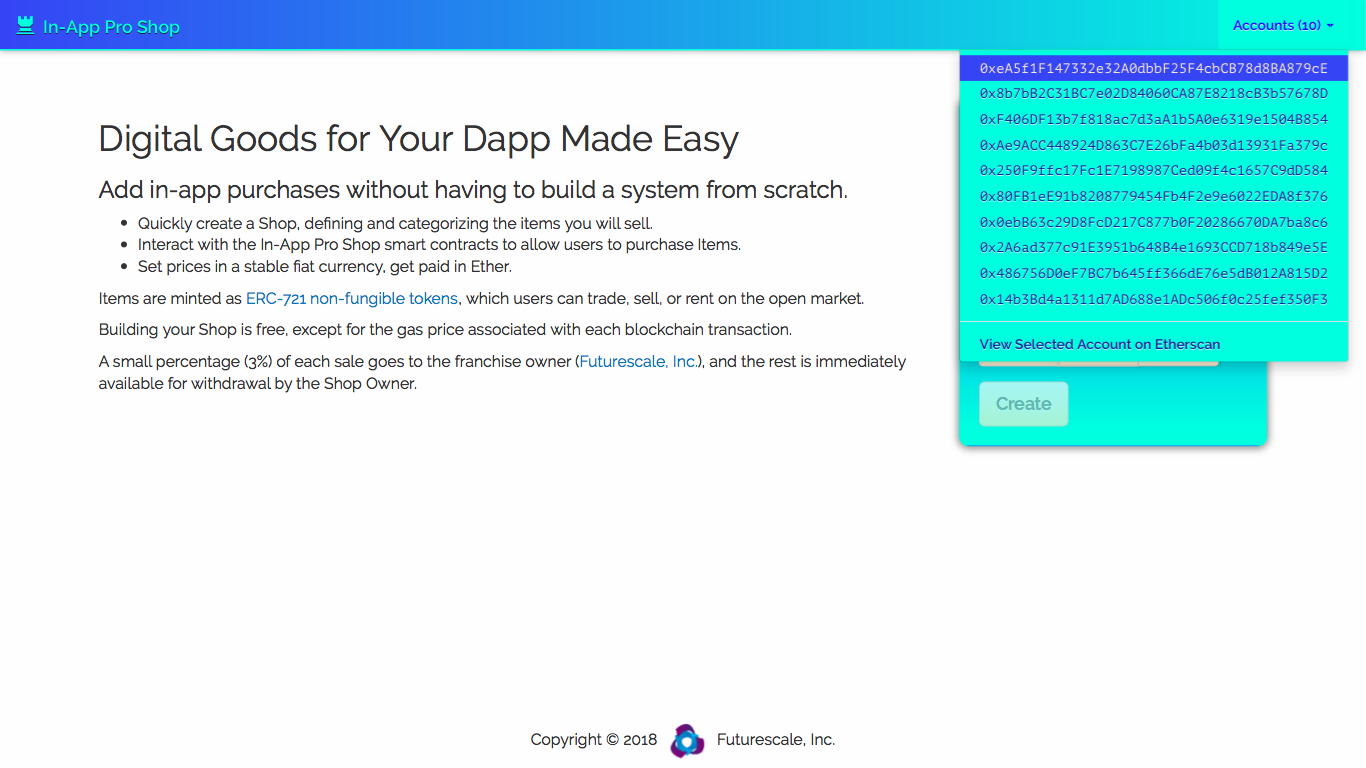 Selecting the Shop Owner Account - Ganache provides ten, MetaMask only its current selection.
Selecting the Shop Owner Account - Ganache provides ten, MetaMask only its current selection.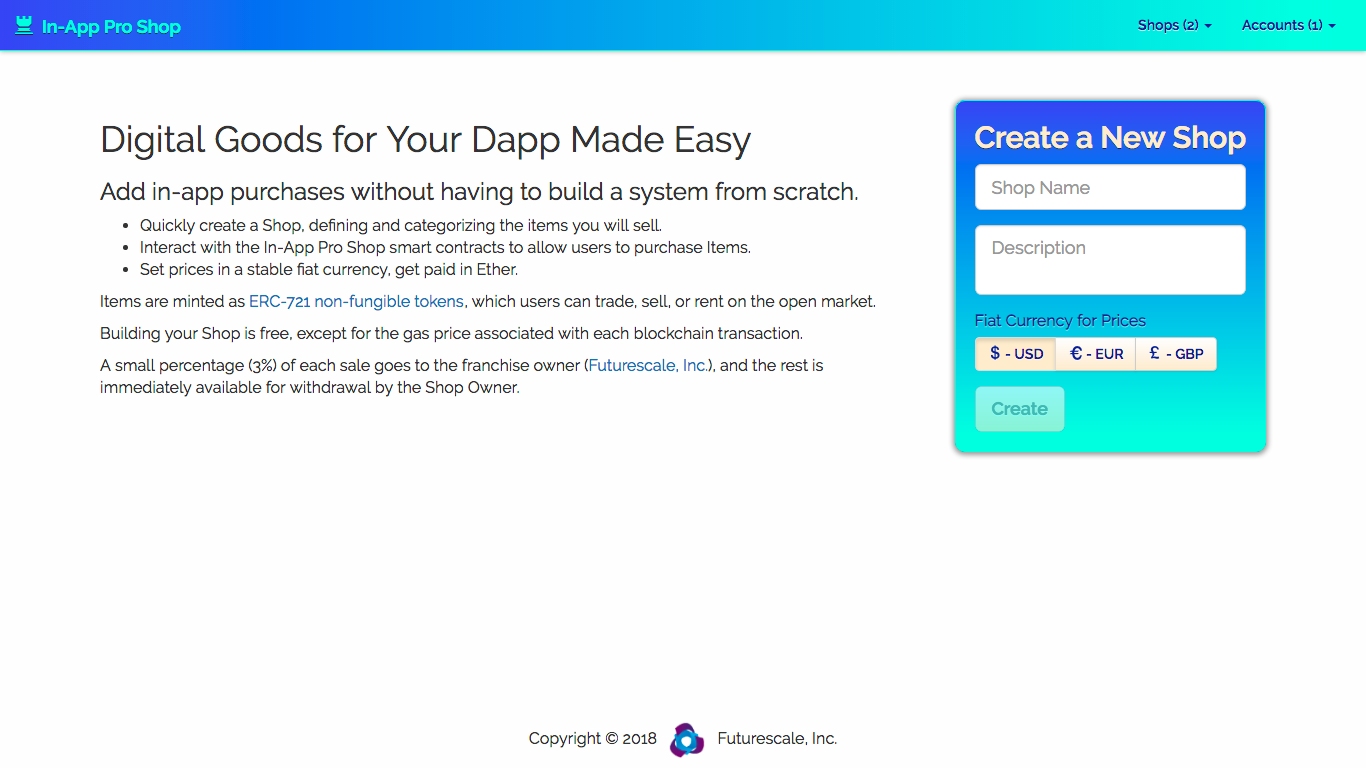 Creating a New Shop - Add a name and description, choose a fiat currency, click “Create”.
Creating a New Shop - Add a name and description, choose a fiat currency, click “Create”.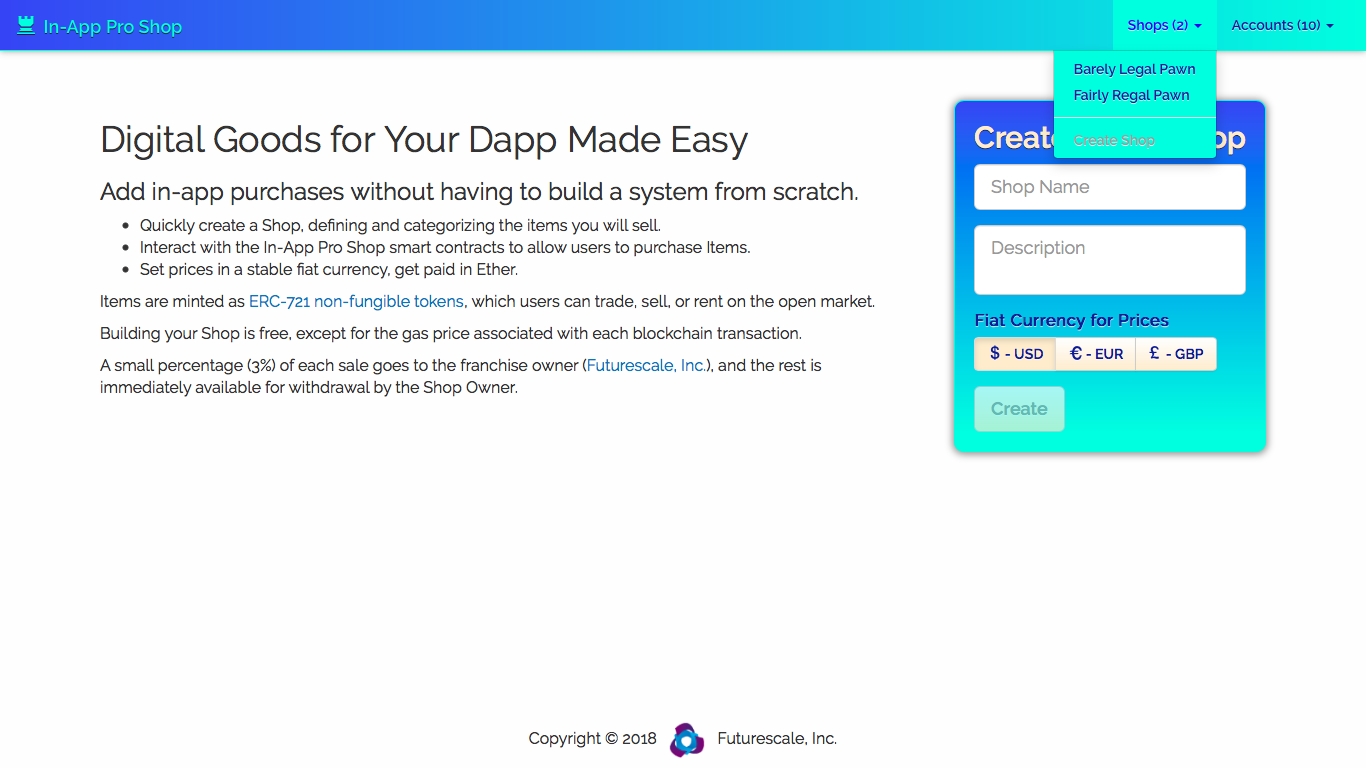 Selecting an Existing Shop - Run as many as you like, from one or multiple accounts.
Selecting an Existing Shop - Run as many as you like, from one or multiple accounts. Viewing a Shop - The current balance can always be withdrawn.
Viewing a Shop - The current balance can always be withdrawn.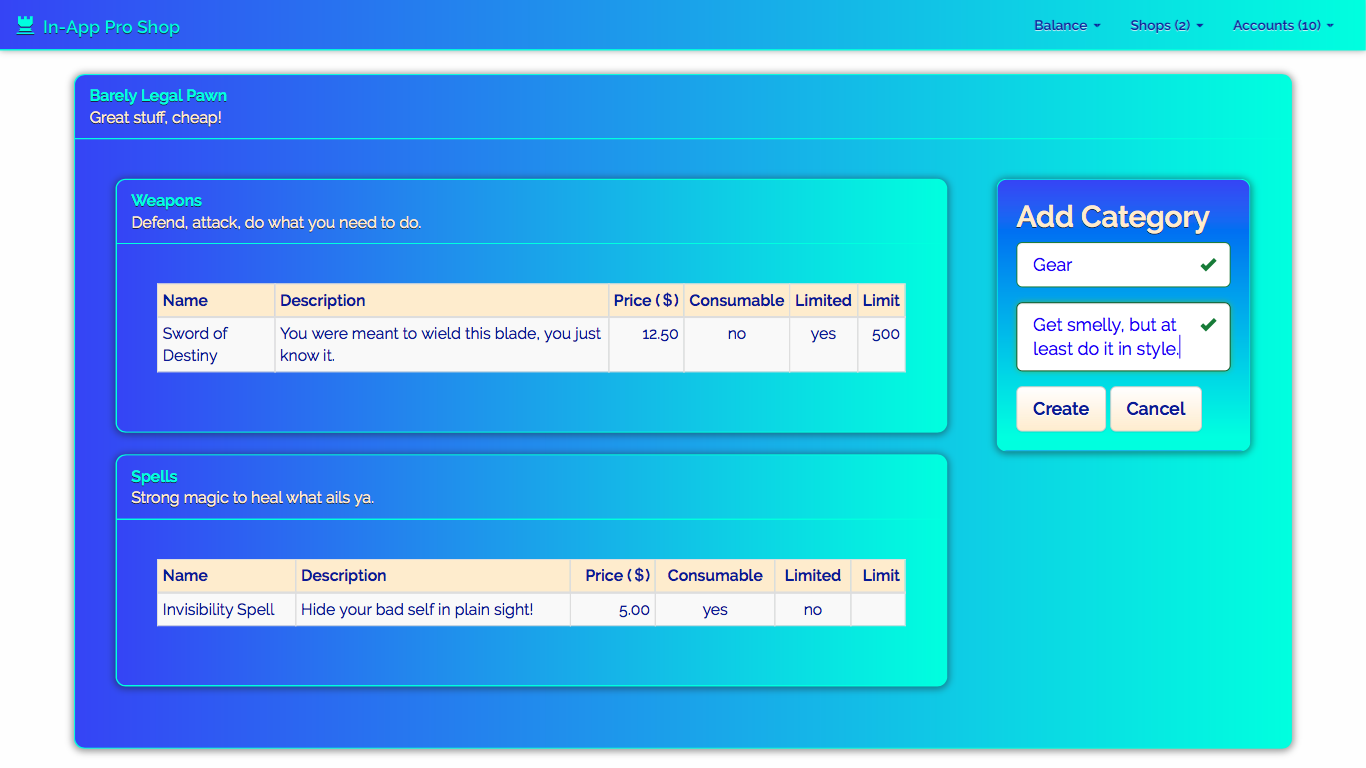 Creating a Shop Category - Click “Add Category”, add a name and description, click “Create”.
Creating a Shop Category - Click “Add Category”, add a name and description, click “Create”.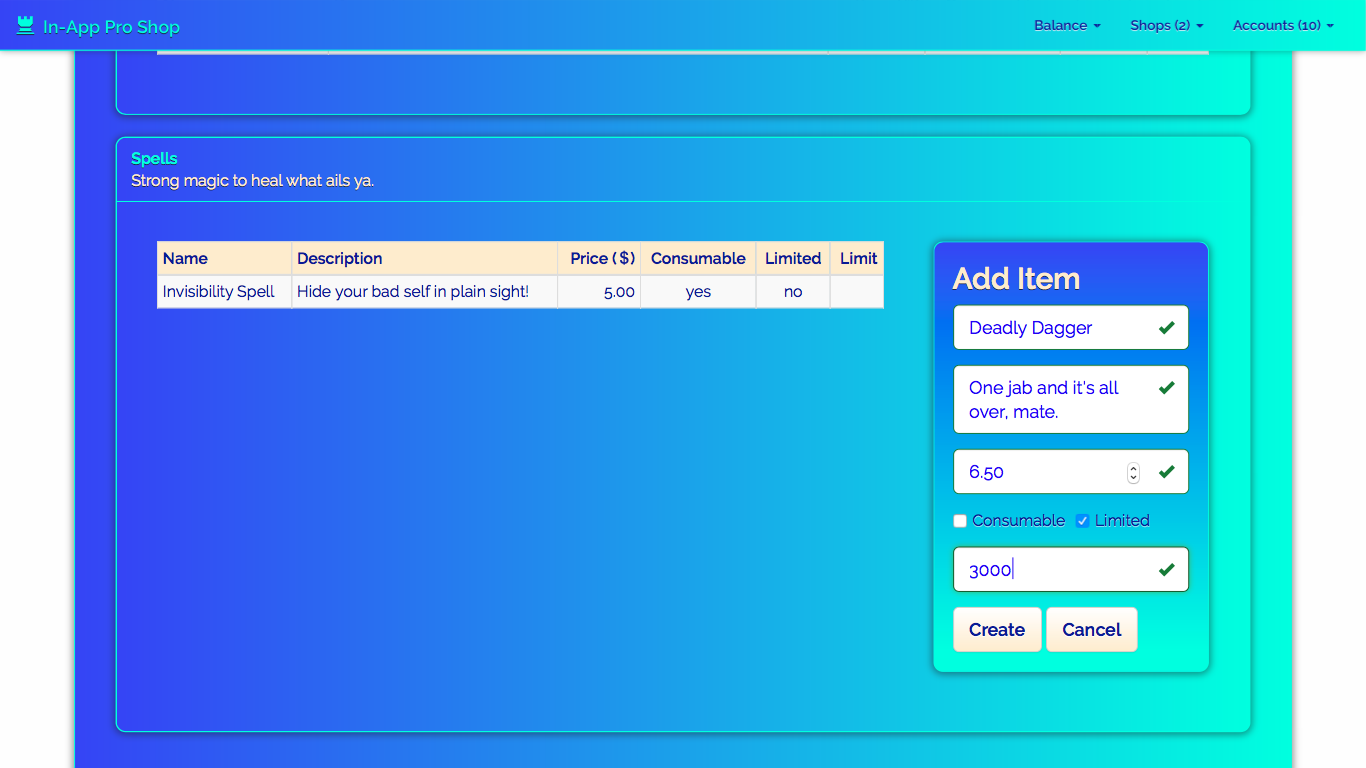 Creating an Item - Click “Add Item” on a category panel, fill out the form, and click “Create”.
Creating an Item - Click “Add Item” on a category panel, fill out the form, and click “Create”.